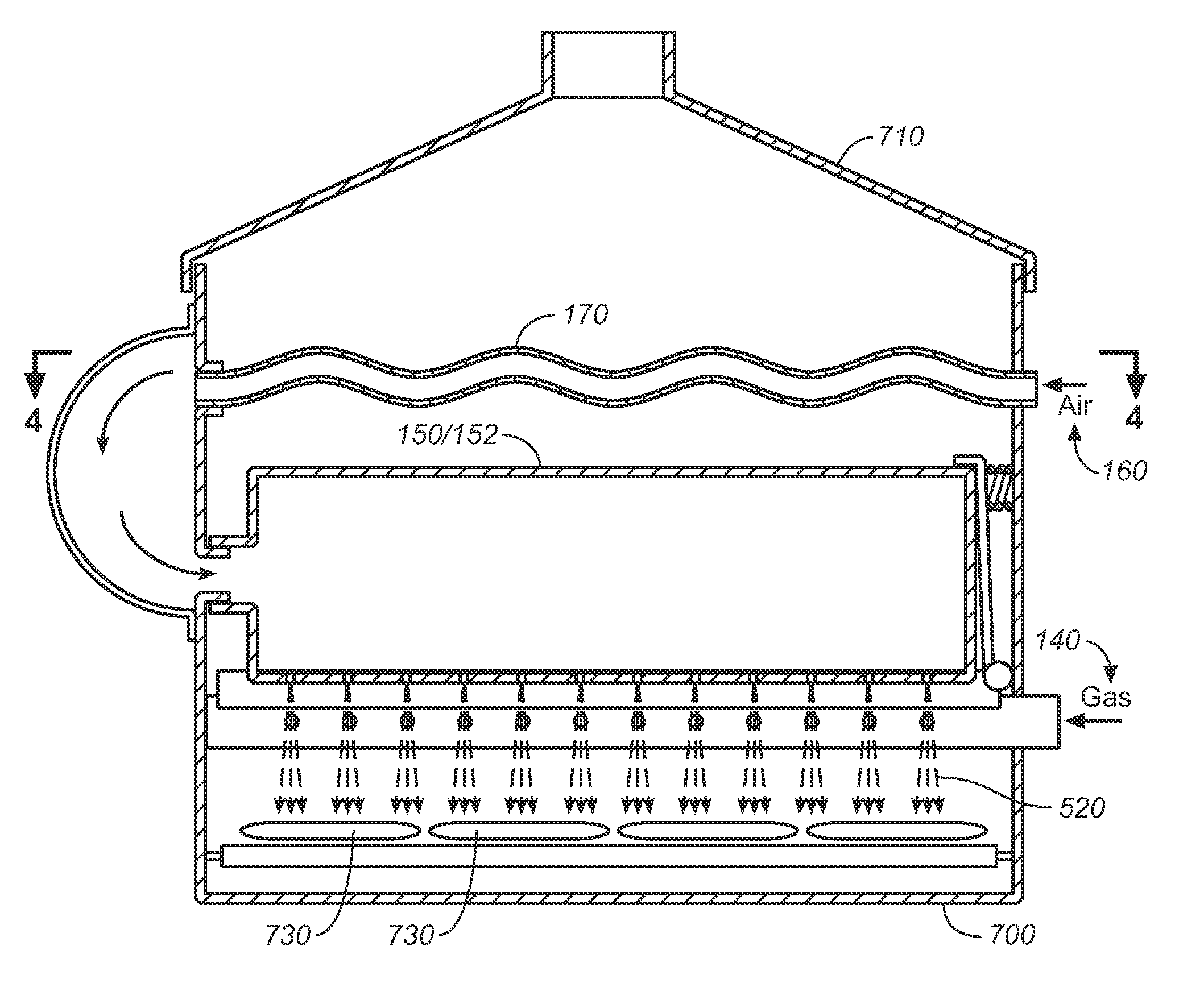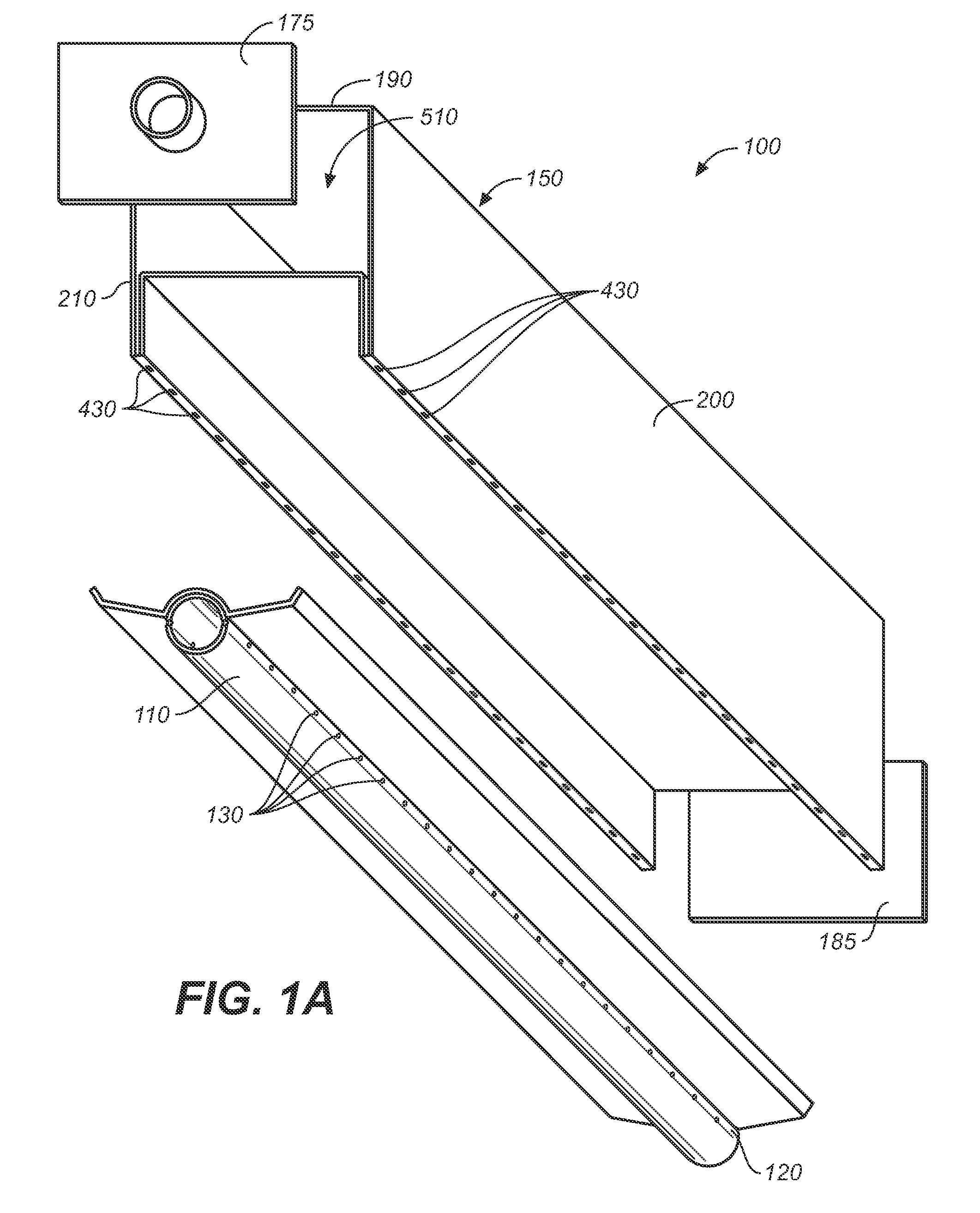Broiler, conveyor oven, and toaster system with pressurized air guide for heat and flames
a conveyor oven and toaster technology, which is applied in the direction of gaseous heating fuel, stoves or ranges, heating types, etc., can solve the problems of uncomfortable environment for kitchen staff, energy-intensive equipment of conveyor ovens and broilers, etc., to facilitate waste heat transfer, increase energy efficiency, and save energy.
- Summary
- Abstract
- Description
- Claims
- Application Information
AI Technical Summary
Benefits of technology
Problems solved by technology
Method used
Image
Examples
example 1
[0103]In a first test, the Nieco 624 gas conveyor broiler, which is a standard platform for a first major fast food restaurant chain (Chain X, name withheld), was compared to a newer system, the JF62 gas conveyor broiler, which was modified to incorporate the inventive waste heat recovery system. The Nieco 624 gas conveyor broiler is a standard pass-through design with a single chain running through the cooking chamber that accommodates three cooking lanes for product (e.g., hamburger patties), three rows deep. A catch tray at the end of the conveyor collects the cooked product. In operation in typical franchise establishment, the conveyor runs continuously during the day, with the heat source constantly energized. The broiler uses infrared gas burners to heat the broiling chamber and electric motors to drive the conveyor through the chamber. A secondary chain runs beneath the main cooking chamber with electrically-heated platens for toasting buns.
[0104]The new JF62 conveyor broiler...
example 2
[0128]In second and third tests, a Nieco 1424 gas conveyor broiler (with no catalyst), and a Nieco 1424 gas conveyor broiler (with catalyst) were compared to a new Nieco JF143 gas conveyor broiler with catalyst.
[0129]Background: In recent years, conveyor broilers have fallen under mandates by regional Air Quality Management Districts (AQMDs) in the state of California. These AQMDs require conveyor broilers to have an added catalyst to reduce the particulate emissions from cooking meats. The catalyst fits on top of the broiler cooking chamber and converts captured grease into carbon dioxide and water vapor. Testing has shown that the use of a catalyst can reduce the energy consumption of the conveyor broiler by reflecting heat back into the cooking chamber.
[0130]The Nieco 1424 gas conveyor broiler is the existing standard cooking platform in two major fast food restaurant chains, Chain Y and Chain Z [actual names withheld as confidential]. As with the 624 conveyor broiler, the 1424 b...
PUM
 Login to View More
Login to View More Abstract
Description
Claims
Application Information
 Login to View More
Login to View More - R&D
- Intellectual Property
- Life Sciences
- Materials
- Tech Scout
- Unparalleled Data Quality
- Higher Quality Content
- 60% Fewer Hallucinations
Browse by: Latest US Patents, China's latest patents, Technical Efficacy Thesaurus, Application Domain, Technology Topic, Popular Technical Reports.
© 2025 PatSnap. All rights reserved.Legal|Privacy policy|Modern Slavery Act Transparency Statement|Sitemap|About US| Contact US: help@patsnap.com



